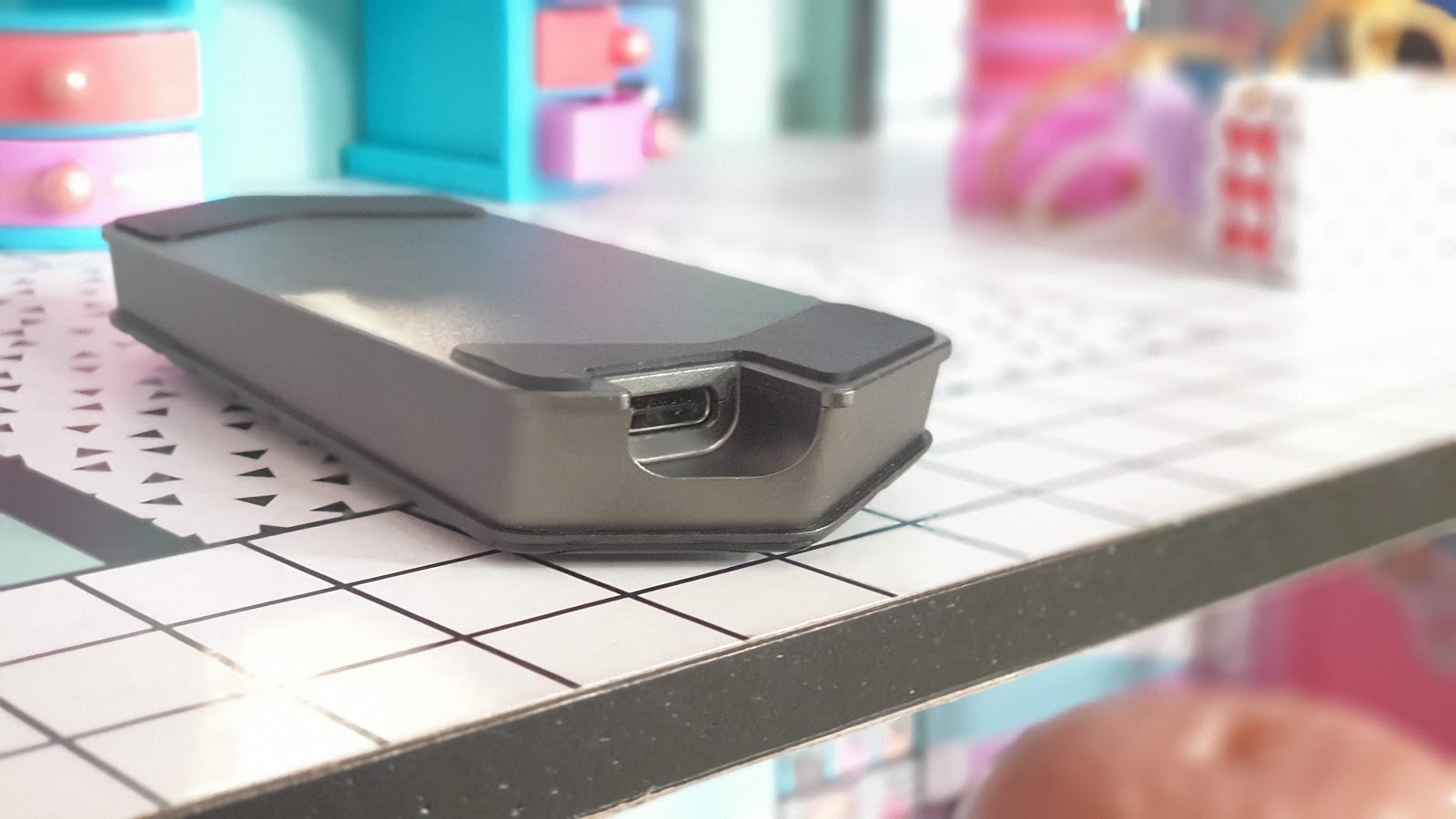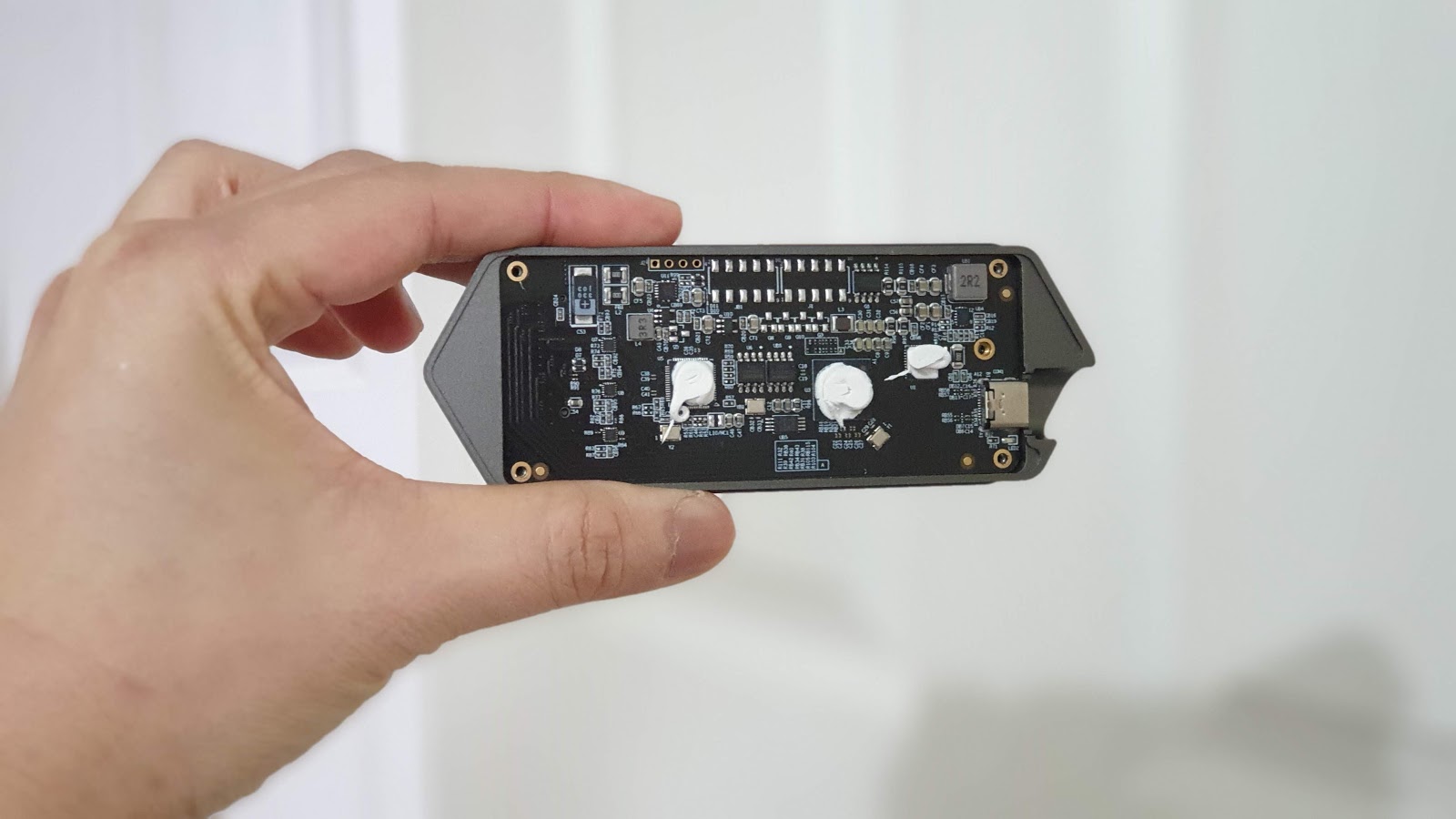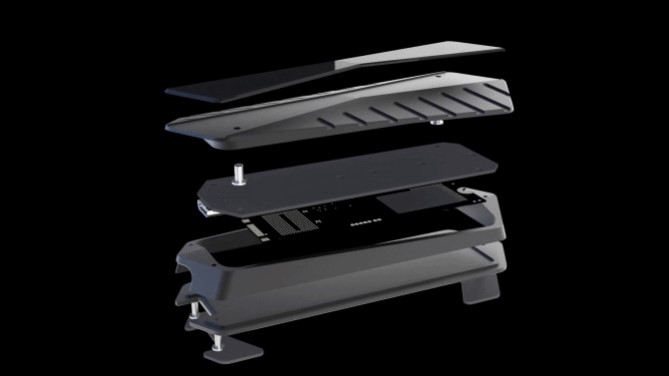TechRadar Verdict
This drive is as close as it gets to perfection; devilishly speedy and very affordable. It’s like having a Ferrari for the price of an entry level saloon. Paradoxically, that’s what makes us nervous, a sense of too-good-to-be-true. Proceed with caution as this is Indiegogo territory.
Pros
- +
Shockingly cheap
- +
Extremely fast, especially on writes
- +
IP67 rating
- +
Long cable
- +
4TB capacity available
Cons
- -
Have to wait till July 2021
- -
Real life transfer rates suspiciously low
- -
No noticeable improvement on Thunderbolt 3
Why you can trust TechRadar
The first USB 4/Thunderbolt 4 drive has landed and Indiegogo of all places is where the event happened. An hitherto unknown company, GigaSSD, pipped the likes of Seagate and WD to the post to claim this first. How fast is it? How hot does it get? How expensive is it and most importantly, when can you buy it? We will answer all these questions and more. Just bear in mind that Indiegogo is not your usual online shopping destination as it comes with a few strings attached.
Pricing and availability
The GigaSSD GigaDrive is only available at the time of writing on Indiegogo. It is available in 1TB, 2TB and 4TB versions for US$153, US$219 and US$$359. If you feel kind and generous, a trio of 4TB SSDs will cost you only $1,039 or $86.60 per TB, which is very, very cheap. Just bear in mind that you have to wait till July 2021, that’s up to four months wait. Worth a punt? You decide.

Design
Engineers at GigaSSD opted for an industrial design that blends black shiny plastic with anodized metal. It is shaped like an elongated hexagon and other than two rubber stickers that hide four screws, there’s nothing - not even a sticker - on the enclosure to indicate who produced the GigaDrive.

The brushed aluminium finish gives it a premium look. At 114mm x 337mm for a thickness of 12.5mm and a weight of 74g, it is very pocketable to say the least. The 45cm-long bundled cable is a TB3 model and is ACASIS branded.

The GigaDrive is IP67 rated which is about as good as it gets if you don’t plan to immerse your drive and in the absence of any rubber flap for the Thunderbolt port. There’s plenty of notches though to improve grip.

Hardware
We know that the drive uses parts of WD_Black SN750 (aka WDS100T3X0C) which is what CrystalDiskInfo identified. This is a 1TB NVMe M.2 2280 SSD drive. Given that WD sells the 1TB, 2TB and 4TB models for $139.99, $309.99 and $799.99 direct, we’re unsure as to how GigaSSD managed to get such a bargain especially as the current market is a seller’s one due to ongoing production issues.
The Indiegogo page lists an Intel AGI M.2 2280 NVMe “memory”, which almost certainly refers to a solid state drive that’s manufactured by a Taiwanese company called Agile Gear International. Some reports that the company - which is popular in South East Asia - is funded by Intel and uses Intel NAND flash memory.

When asked about that strategy, they told us “the reason for the low selling price is because we sell GigaDrive directly to our client, with no middleman. Also, as we are on the crowdfunding stage and just launched the product, we prefer to have a small profit and big customer base. The retail price is going to be higher after the Indiegogo campaign, of course.”
Other than the 3D NAND chips that make up the bulk of the silicon inside the chassis, there’s also an Intel JHL8440 Thunderbolt 4 controller, part of the Goshen Ridge family. TB4 adds support for the USB4 protocol as well as better security against DMA attacks.
Performance
Here’s how the Gigadrive GigaSSD 1TB external Thunderbolt 4 SSD performed in our suite of benchmark tests:
CrystalDiskMark: 2804MBps (read); 2538MBps (write)
Atto: 2640MBps (read, 256mb); 2400MBps (write, 256mb)
AS SSD: 1869MBps (seq read); 1711MBps (seq write)
AJA: 1830MBps (read); 1643Mbps (write)
We didn’t have a Thunderbolt 4 laptop or PC at hand to test but we can confirm that this storage trailblazer will indeed hit 2.8GBps as indicated by the marketing literature; 2,804MBps to be more precise, when using CrystalDiskMark on its default read settings. That’s about half the theoretical maximum speed of Thunderbolt 3 or Thunderbolt 4. Write speeds were amongst the best we’ve seen on a single drive device at more than 2.5GBps.
Elsewhere, numbers were slightly less promising with a real life 10GB file transfer equalling a transfer rate of just over 300MBps, a near 90% hit which cannot be explained by throttling (when the device gets too hot). We reached out to GigaSSD to find out more.
The device was warm when testing, staying at just under 40 degrees centigrade in a 20 degrees centigrade room (measurements taken using a FLIR camera) just as the marketing literature alluded to. The aluminum shell - which helps to dissipate heat - and the Micron DDR3 DRAM cache (of unknown capacity) apparently made that possible.
Note that the tests have been carried out on a 1TB drive and performance should improve with higher capacities as the controller can access more chips concurrently.
Competition
We have reviewed a number of external Thunderbolt 3 SSD in the past. The OWC Envoy Pro EX, the Plugable 2TB, the Patriot Evlvr, the G-Technology G-Drive mobile Pro, the Glyph Atom Pro and last but certainly not least, the Samsung X5 portable SSD which we reviewed almost one year ago and remains the reference in terms of speed and performance.
At $349, the latter costs more than twice the GigaSSD. The cheapest 1TB Thunderbolt 3 SSD still carries an $88 premium (about 50%) over the Gigadrive. As it stands - at the time of writing and most probably for a foreseeable - the Gigadrive GigaSSD has no real competition when it comes to the all important price/performance ratio.
Final verdict
So there we have it, the first Thunderbolt 4/USB4 solid state drive and dare we say, it is a slam dunk. At this price, the GigaSSD should sell like hot cakes; it is simply too attractive to ignore especially if you want a 2TB or 4TB fast external SSD. You should be able to shuck it (i.e. remove the internal M.2 2280 SSD) but we haven’t tried it; doing so is likely to void the warranty of the device though.
A couple of points though; the GigaSSD won’t ship until July 2021 which is a long way from now. Will average component prices go down? Definitely not. Should you buy it? Well if you’re ready to take the risk, then yes, by all means go for it. Just be aware of the strings attached.
- We've also featured the best portable SSD

Désiré has been musing and writing about technology during a career spanning four decades. He dabbled in website builders and web hosting when DHTML and frames were in vogue and started narrating about the impact of technology on society just before the start of the Y2K hysteria at the turn of the last millennium.
